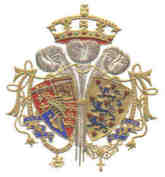

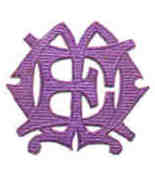
EDWARD LAW
CREST COLLECTING
ARMS, CRESTS & MONOGRAMS
 |
 |
 |
WHAT ARE CRESTS AND CREST ALBUMS?
Rather like stamp albums, crest albums were
produced to house collections of arms, crests and monograms which
were cut from letterheads, notepaper and envelope flaps. Crests,
as these were generically known, were produced by die-stamping
either with or without ink. The design was cut, in  mirror image, on
the face of a metal die, usually steel, by a skilled craftsman
known as the die-cutter, it was then mounted in a die press which
was applied to the paper with great pressure, transferring the
image to the paper. This process could be done without the
application of ink, when the resulting crest is termed blind or
albino. Embossing with ink could be achieved in two ways, the
actual paper being embossed with the high points carrying ink, or
the paper remaining undisturbed and the effect of embossing being
achieved by the thickness of the ink alone. They are generally
easily distinguished from lithographic printing by their tactile
nature and reflective surface. Illustrated here is a die of a
garter crest for a masonic lodge (Wellington No. 548).
mirror image, on
the face of a metal die, usually steel, by a skilled craftsman
known as the die-cutter, it was then mounted in a die press which
was applied to the paper with great pressure, transferring the
image to the paper. This process could be done without the
application of ink, when the resulting crest is termed blind or
albino. Embossing with ink could be achieved in two ways, the
actual paper being embossed with the high points carrying ink, or
the paper remaining undisturbed and the effect of embossing being
achieved by the thickness of the ink alone. They are generally
easily distinguished from lithographic printing by their tactile
nature and reflective surface. Illustrated here is a die of a
garter crest for a masonic lodge (Wellington No. 548).
A BRIEF HISTORY OF THE HOBBY OF CREST COLLECTING.
Crested stationery made its
appearance in England after the introduction of uniform penny
postage in 1840. Prior to that date letters usually took the form
of a 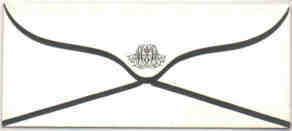 sheet of paper
which was folded to letter size for posting and sealed with
sealing wax, often impressed with the writer's arms or crest. The
crests embossed and printed on the flap of envelopes after this
date were a continuation of the earlier procedure though lacking
any practical use. So the new postal arrangements provided two
collectibles: postage stamps and crests.
sheet of paper
which was folded to letter size for posting and sealed with
sealing wax, often impressed with the writer's arms or crest. The
crests embossed and printed on the flap of envelopes after this
date were a continuation of the earlier procedure though lacking
any practical use. So the new postal arrangements provided two
collectibles: postage stamps and crests.
It appears to have been about 1862 that albums commenced to be produced for crests and offered to collectors; almost at the same time sets of crests were being produced for the collector. It is possible that these commercial ventures were catering for an existing hobby. I have a plain notebook watermarked 1861 which contains a contemporary collection.
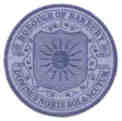 Most of the earliest crest albums were very plain with
each page printed in a single colour to create 12, 16 or 20
squares for the reception of crests. However, at least one of the
early publishers produced an album incorporating designs. By 1867
Marcus Ward & Co., of Belfast were producing superbly
designed and printed albums of a quality not to be surpassed.
Most of the earliest crest albums were very plain with
each page printed in a single colour to create 12, 16 or 20
squares for the reception of crests. However, at least one of the
early publishers produced an album incorporating designs. By 1867
Marcus Ward & Co., of Belfast were producing superbly
designed and printed albums of a quality not to be surpassed.
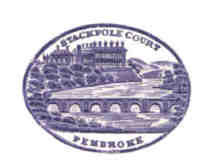 The four major album producers were Marcus Ward &
Co.; Stafford Smith & Co. (in conjunction with Marlborough
& Co. and D Appleton & Co. of New York); William Lincoln
(subsequently William Simpson Lincoln); and Stanley Gibbons &
Co. All produced a series of albums over a number of years. Other
publishers were Acton Griffith; Johnson & Rowe; William
Johnson & Sons; A Lenègre (Paris); De La Rue & Co.; W
Mack; Gale & Polden; and Ernest Nister.
The four major album producers were Marcus Ward &
Co.; Stafford Smith & Co. (in conjunction with Marlborough
& Co. and D Appleton & Co. of New York); William Lincoln
(subsequently William Simpson Lincoln); and Stanley Gibbons &
Co. All produced a series of albums over a number of years. Other
publishers were Acton Griffith; Johnson & Rowe; William
Johnson & Sons; A Lenègre (Paris); De La Rue & Co.; W
Mack; Gale & Polden; and Ernest Nister.
Crested stationery was widely available: probably any competent printer would have been capable of producing this line of the trade, having the dies engraved by specialist die-cutters. However, the production of sets for collectors was largely in the hands of just a few firms for the trade was only worthwhile if a certain volume of sales could be generated. Known producers/vendors of sets include: T Culleton; Stafford Smith & Co.; William (and William Simpson) Lincoln; Gale & Polden and Stanley Gibbons & Co. See also Heraldic on the Topics page for further information on some of the above firms and on others involved in the trade.
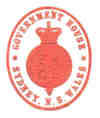 Large numbers of sets were produced, including crests of
the army regiments and of the ships of the royal navy, arms and
crests of peers and bishops, arms of schools, universities and
city companies. Whilst the pastime was very firmly centred on the
United Kingdom it was pursued elsewhere, notably by the British
population in India, but also in France, Australia and America.
Large numbers of sets were produced, including crests of
the army regiments and of the ships of the royal navy, arms and
crests of peers and bishops, arms of schools, universities and
city companies. Whilst the pastime was very firmly centred on the
United Kingdom it was pursued elsewhere, notably by the British
population in India, but also in France, Australia and America.
Apart from crests issued in sets, and those gracing private stationery, they were also to be found on the letterheads and envelopes of gentlemen's clubs, hotels, masonic lodges, civic authorities and a multitude of trading and commercial houses.
The hobby continued into the twentieth century but appears to have more or less ceased with the First World War, when a generation of youth had other matters to occupy their time.
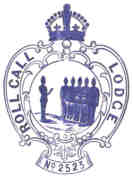 |
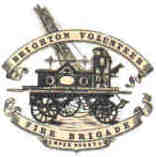 |
 |
RESEARCH.
I shall always be pleased to have details of any albums, particularly publishers' details and any manuscript dates, as I try to establish publication dates of the various albums and editions. I am also interested in identifying the sets which were produced in vast numbers. I have several of these in the original undivided sheets, others are often obvious when mounted together on an album page.

 I shall be happy to pass on such information as I have
on particular albums, publishers and others involved in the
commercial promotion of the pastime, and would welcome
correspondence on the topic.
I shall be happy to pass on such information as I have
on particular albums, publishers and others involved in the
commercial promotion of the pastime, and would welcome
correspondence on the topic.
EXHIBITION.
An exhibition of material from the collection was
hosted by Kilkenny Archaeological Society, Kilkenny, Ireland
during the summer of 2003.
PUBLICATION.
A book Collecting arms, crests and monograms: a
forgotten pastime was published in connection with
the above exhibition. The contribution of the book to the study
of ephemera was recognised with the grant to the author of the
Ephemera Society Award in 2004. Further details at PUBLICATION.
BUYING.
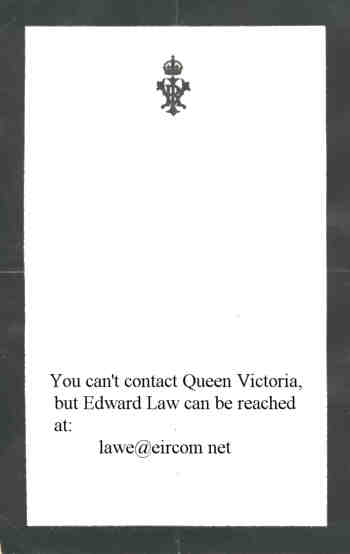 I purchase albums,
collections of loose crests, printers' samples and any related
material. Fullest details of albums, condition, completeness,
etc., will enable me to consider offers.
I purchase albums,
collections of loose crests, printers' samples and any related
material. Fullest details of albums, condition, completeness,
etc., will enable me to consider offers.
SELLING.
An American stationer's & engraver's
sample album, Massachusetts, c1870.
WANT TO SEE MORE?
Follow the links on my TOPICS
PAGE
CONNECTIONS TO RELATED SITES:
About Edward Law, including
interests, bibliography, and the Victorian prize medals of
Huddersfield College.
The history of Huddersfield and district, essays and research material.
Two important research articles on the silver industry in Sheffield and Sheffield silversmiths.
A brief outline of Anastatic printing with reference to crest and photograph albums.
The history of Kilkenny city and county, essays and research material.
Notes and queries on Free Franks of the United Kingdom.
LINKS to other relevant sites:
The Ephemera Society. For
collectors of, and dealers in, ephemera.
Page updated 29 June 2011